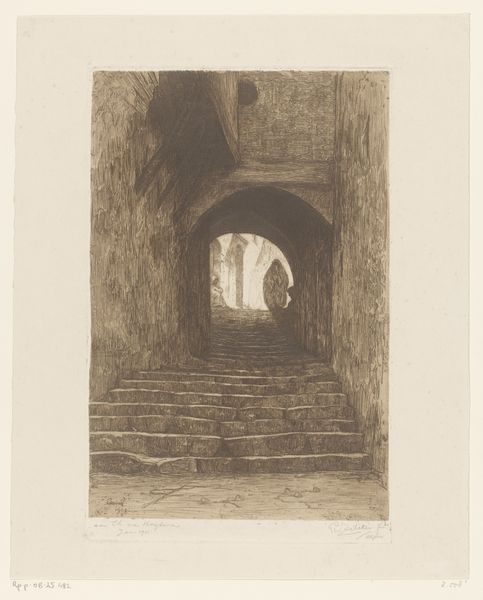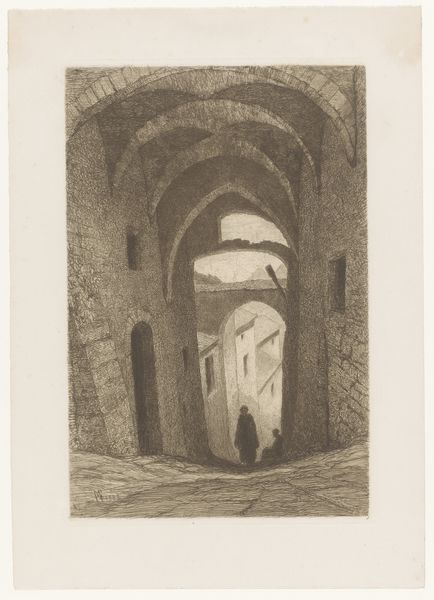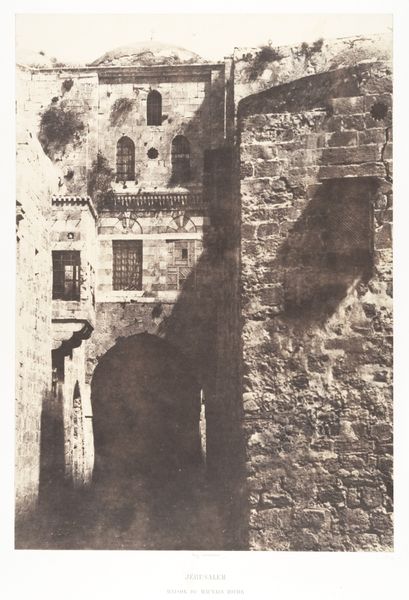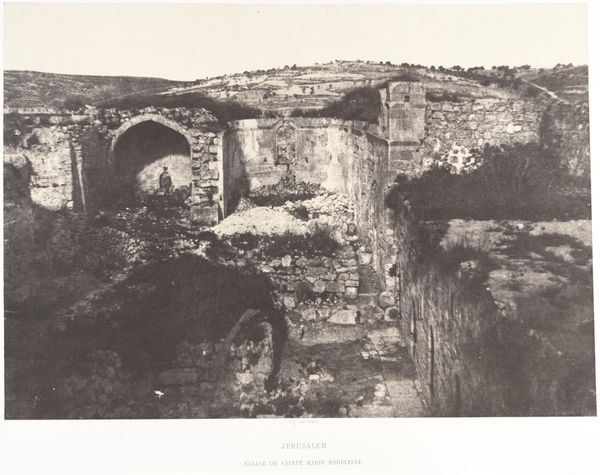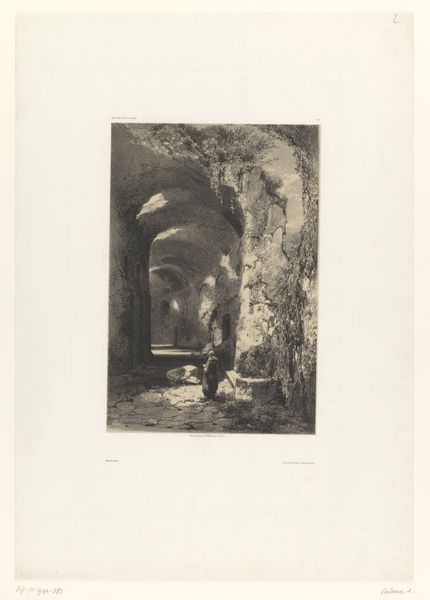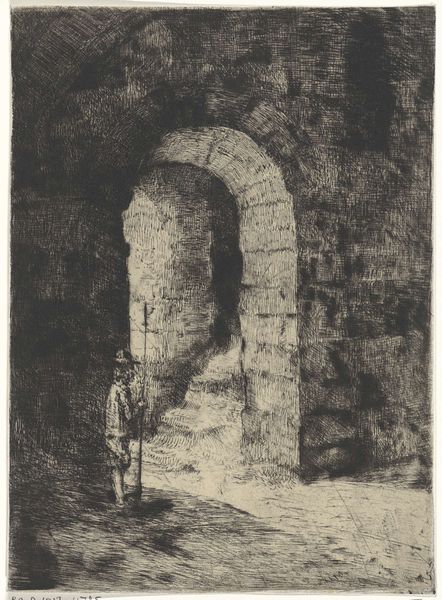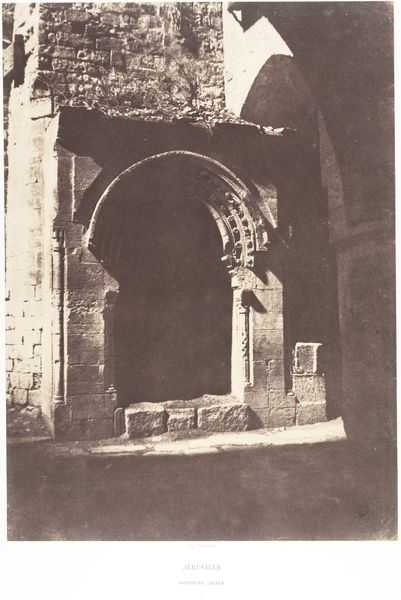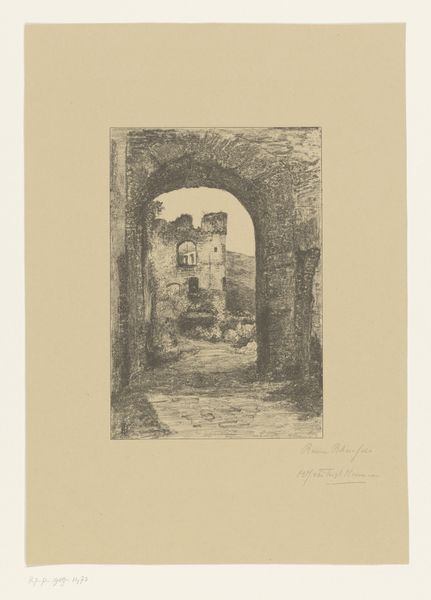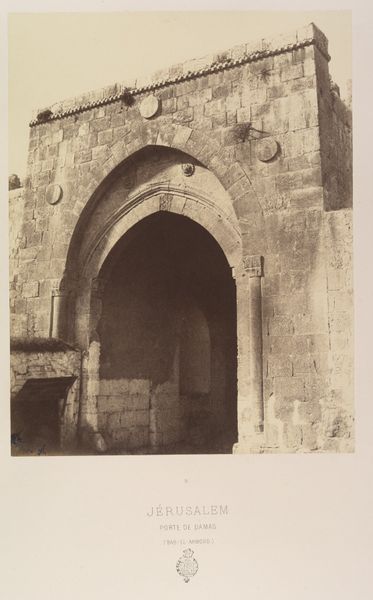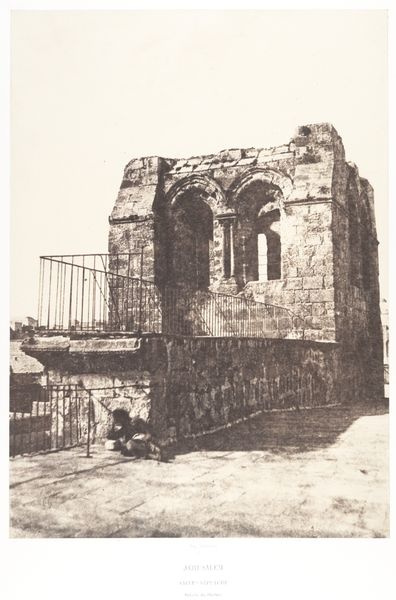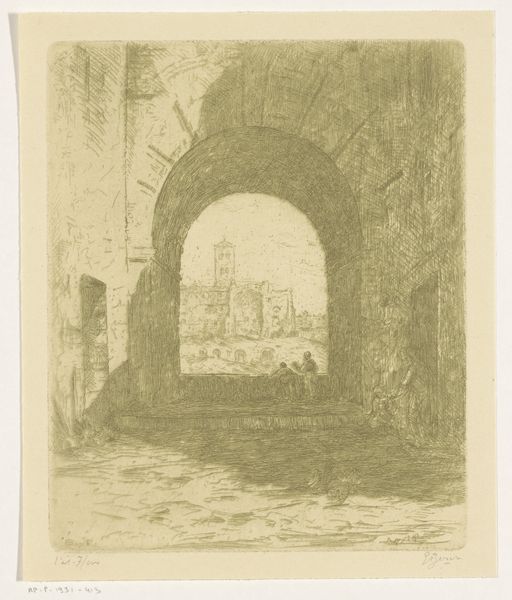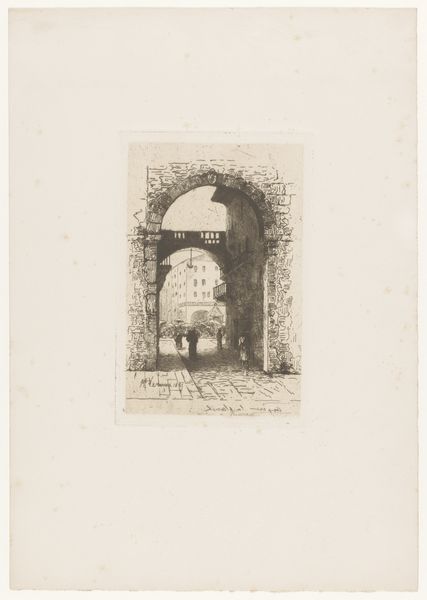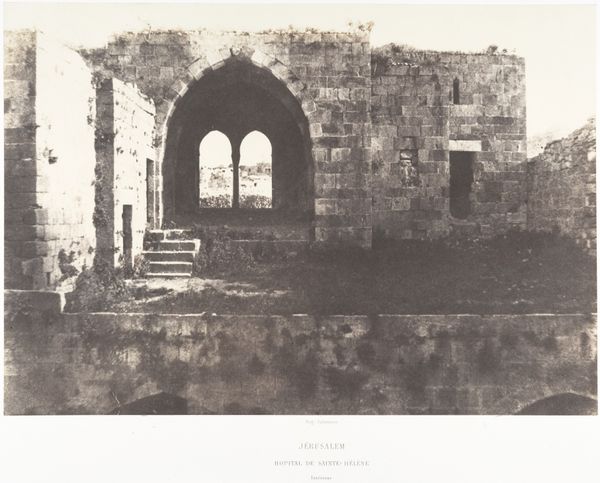
Arcade de l'Ecce Homo. Ponce Pilate présente Jésus au Peuple 1860
0:00
0:00
print, photography, architecture
# print
#
photography
#
cityscape
#
architecture
#
realism
Dimensions: Image: 10 13/16 × 8 3/16 in. (27.4 × 20.8 cm) Mount: 17 15/16 × 23 1/4 in. (45.5 × 59 cm)
Copyright: Public Domain
Curator: It’s interesting how ruinous the composition feels immediately. There’s a decay, almost biblical, that permeates the whole photograph. Editor: You’ve put your finger right on it. What we’re looking at is “Arcade de l'Ecce Homo. Ponce Pilate présente Jésus au Peuple” by Louis de Clercq, dating back to 1860. De Clercq has captured a photographic cityscape that delves into the weight of religious narrative. Curator: Narrative seems like such a strong word for such a still, desolate shot. To me, it seems like an anti-narrative in its stillness and presentation. All that is happening here is the presence of time. Editor: In many ways I see your point. There’s no clear story being told here. What is explicitly in focus is time as it interacts with architectural structure, slowly changing stone. The piece evokes themes related to the representation of space, place, and the mediation of history, especially within photography. Curator: Looking closer, I do find it hard to dismiss entirely the religious aspect given how loaded the title is. To present it as an arcade is already a decision weighted with the biblical narrative. I am, however, struck by how much of this scene is obfuscated. Everything is in shadow. What light there is in the image mostly serves as contrast for the ruins to look that much more desolate. The choice to center it in the shot almost mocks traditional presentation as its scale is monumental, but only within the confines of the photographic frame. Editor: I see De Clercq engaging in a structural exercise of framing an accepted image with photographic means. By emphasizing architecture as a primary subject rather than religious actors, De Clercq elevates these forms to a space for discourse on what realism entails in photography. The stony surface of the structure shows light reflecting irregularly, yet it's precisely this raw aesthetic, this directness that is the point. Curator: Yes! Its commitment to representing the site directly contributes to our appreciation of place and form rather than some high-minded concept, don't you think? In essence, he’s capturing how light shapes and defines the form, even if time shapes and deforms the whole. Editor: So, it ends up feeling real even while capturing a ghost of history. Thanks for sharing your insight, as always! Curator: Absolutely. It was a pleasure delving into the details together!
Comments
No comments
Be the first to comment and join the conversation on the ultimate creative platform.
